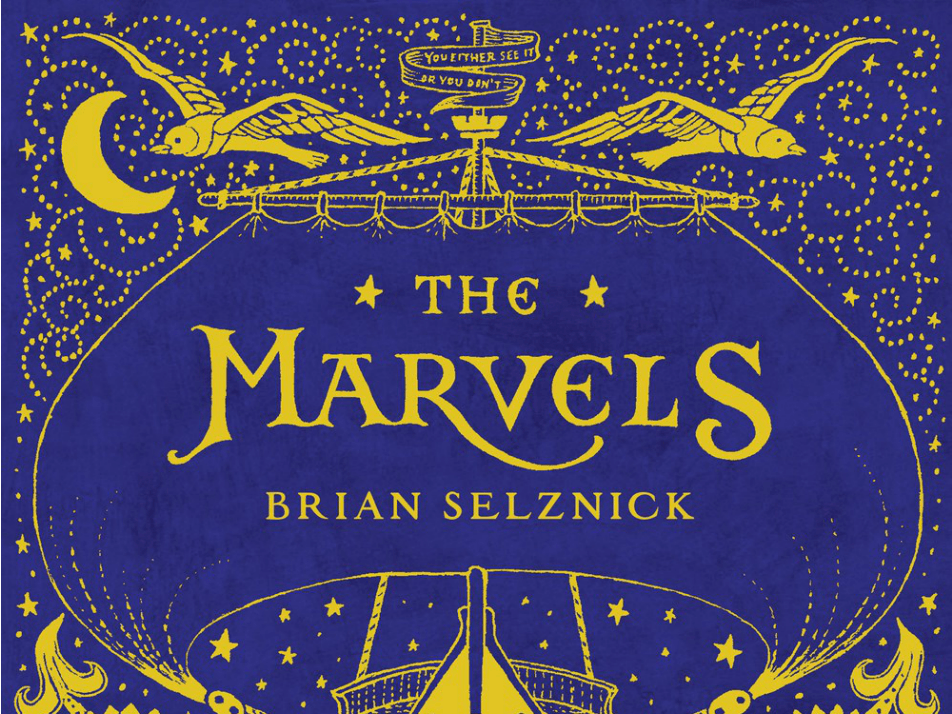Brian Selznick's new book has no words for 400 pages -- and it's brilliant

Go Deeper.
Create an account or log in to save stories.
Like this?
Thanks for liking this story! We have added it to a list of your favorite stories.
Brian Selznick's new book opens with 400 pages of pictures.
Each is stunning, detailed and dark.
There are no sentences until page 392 — but readers of all ages will be hooked by the story. "The Marvels" follows five generations of a family of actors, from the year 1766 to 1900. There are shipwrecks, storms and mysterious creatures.
Then, just at the turn of the 20th century, Selznick's illustrations end on an epic cliffhanger. The text of the story picks up 90 years later, leaving the reader with many questions and an entirely new cast of characters who help piece things together.
Turn Up Your Support
MPR News helps you turn down the noise and build shared understanding. Turn up your support for this public resource and keep trusted journalism accessible to all.
Selznick joined MPR News' Kerri Miller to talk about "The Marvels," his career and how he translates his imagination onto the page.
On his path to illustrating children's books
"In high school, everyone used to tell me that I should illustrate children's books, so in college, I completely rebelled against it," Selznick said. "The main thing I did was study figure drawing. I took a lot of figure drawing classes."
The figure drawing classes honed Selznick's talent for capturing the human form, but when he realized after college that he did actually want to illustrate children's books, his portfolio wasn't exactly geared toward illustration — it was full of nude sketches. "I had nothing to show people."
That didn't stop him. He found work illustrating children's books for over a decade. Then, in 2007, he hit it big with "The Invention of Huge Cabret," which was adapted into an Oscar-winning film directed by Martin Scorsese.
On capturing the look of his characters
"There's a story that Charles Dickens would put a mirror on his desk and look at his own face as he tried to experience the emotion of his characters — then he'd describe them," Selznick said.
"Whether or not it's true, I put a mirror on my desk sometimes and will make expressions to help me with the expressions of the characters I'm drawing." Selznick also relies heavily on models and photographs of models. Once he has imagined a character, he searches for their counterpart in the real world.
"It's about waiting and being out in the world and looking," he said. "I have to wait until I find the person in real life who looks like the character in my head."
He doesn't use professional models or actors. Instead, he's found his models in theaters and on the street and once in a cheese shop in Brooklyn. The final drawings, he said, are always better for having a real-life inspiration behind them.
"People have amazing faces, and having the specificity of someone's actual face is always more interesting than whatever it is I might be imagining."
On the real-life house that inspired "The Marvels"
In "The Marvels," a young boy stumbles across a strange house in modern London. The windows on the street are all dark, except for one, which peers in on what looks like an 18th-century dining room.
Selznick was inspired by the Dennis Severs' House, one of the best-kept secrets in London. It's a beautifully restored 18th century home, but it's unlike any other historical site Selznick had ever visited. Selznick and his husband stumbled across it at the recommendation of a friend.
"It has erratic hours, and we knocked on the door — they took pity on us and let us in," he said. "You're told not to talk; you're given a path to walk through the house, but other than that you're left to your own devices."
Every room you enter is arranged as if the real 18th-century family who lived there had just left. "There's hot tea on the table, there's food, there's laundry in the corner. There are sounds built into the walls so you can hear whispered conversations and carriages outside and church bells ringing."
"It felt very much like I had actually slipped back in time."


